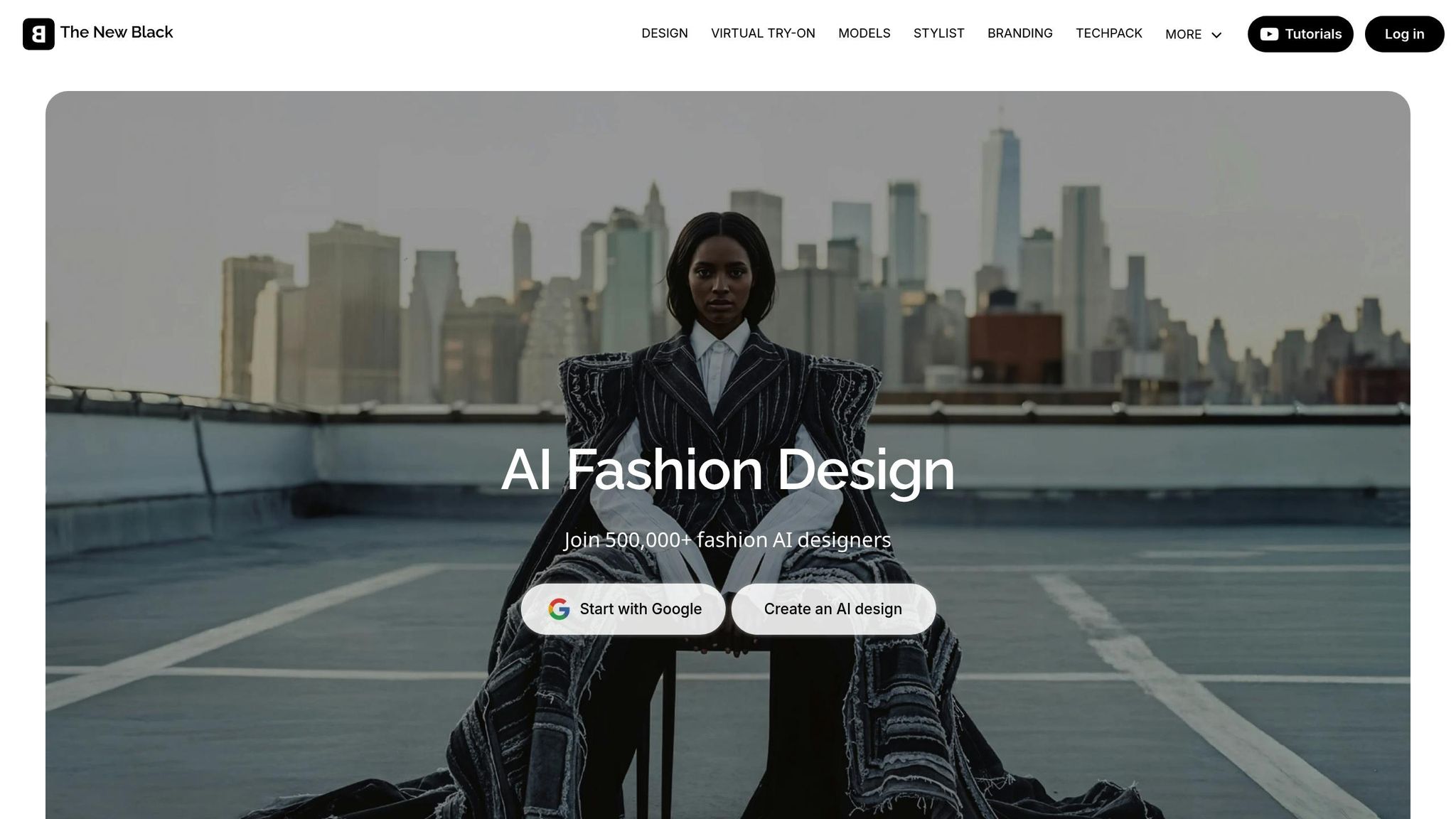AI is transforming how bags are designed and manufactured. Here’s what you need to know:
- Trend Analysis: AI analyzes data from social media, e-commerce, and sales to predict consumer preferences, from trending colors to popular materials.
- Mockup Automation: Designers can create polished digital prototypes quickly, reducing errors and speeding up the process.
- Manufacturing Efficiency: AI optimizes material use, reduces waste, and enhances quality control during production.
At JUNYUAN-TASCHEN, these tools streamline processes, improve accuracy, and allow for personalized designs that align with market demands. AI blends data and design to create bags that are both functional and tailored to individual needs.
How to Create your AI Bag Design – The New Black – AI Bag Design Generator

AI-Powered Trend Analysis: Reading Consumer Preferences
AI is reshaping how bag designers understand what customers want by processing massive amounts of data from social media, e-commerce platforms, fashion blogs, and historical sales records. This approach uncovers trends and patterns in consumer behavior that would be impossible for human analysts to spot on their own.
For example, AI algorithms can sift through billions of social media posts to identify trending colors, materials, and design elements – often before they hit the mainstream. When people share photos or voice opinions about specific design features, AI turns those signals into actionable insights for designers.
Using Data to Predict Design Trends
AI-powered forecasting offers a faster and more precise way to predict market demand compared to traditional methods. By analyzing current fashion trends, customer preferences, past designs, and e-commerce data, AI generates fresh ideas and predicts which bag features are likely to become popular.
Studies indicate that AI-driven innovation outperforms non-AI methods by around 40%, thanks to its ability to process enormous datasets and detect subtle consumer preferences. Metrics like seasonal color trends and material choices are tracked to help designers create features that resonate with specific customer groups. These targeted insights play a key role in shaping the customization strategies at JUNYUAN BAGS.
Improving Custom Bag Options
JUNYUAN BAGS leverages AI’s trend analysis to refine its custom sports bag offerings. By examining customer feedback and demand signals, designers can identify which customization options are most appealing, enabling them to craft designs that align with customer needs.
However, human creativity still plays a crucial role in the process. While AI provides forecasts and sparks new ideas, designers ensure these insights are adapted to fit the brand’s identity, production capabilities, and long-term goals.
Automated Mockups: Faster Custom Bag Design
Automated mockups take the guesswork out of custom bag design by transforming ideas into detailed visual representations. Using AI, these mockups turn design specifications and material choices into polished digital images, eliminating the need for slow, manual sketches. This technology processes everything – design specs, material options, and customization requests – to create visuals that clients can review before production even starts. It’s a seamless way to bring earlier data-driven insights into the realm of tangible prototypes.
One standout advantage is the ability to quickly generate multiple design variations. This not only speeds up the creative process but also makes it easier to experiment with different configurations, cutting down on the time spent on revisions.
Benefits of AI-Generated Mockups
AI-powered mockups deliver several key benefits. They can produce multiple design options in a fraction of the time it would take manually, significantly reducing turnaround times. By minimizing errors like misalignments, they ensure higher accuracy in the final product. Plus, the ability to make quick adjustments encourages real-time client feedback, helping to streamline resources and lower design costs.
Personalized and Functional Features
These mockups go beyond just visuals – they focus on functionality too. For instance, they can showcase sport-specific customizations, like padded compartments for tennis rackets, or integrate logos by automatically adjusting size, position, and color for a perfect fit. They even preview fabrics, zippers, and reflective elements under different conditions, ensuring there are no surprises when it’s time for production.
Comparison: AI vs. Manual Design Processes
AI mockups excel where manual processes often fall short. They precisely follow client dimensions and hardware placements, reducing the risk of manufacturing errors and avoiding costly adjustments down the line. It’s a smarter, faster, and more reliable way to bring custom bag designs to life.
sbb-itb-1e6451b
AI in Manufacturing: Efficiency and Quality Control
Once design mockups are finalized, AI takes the reins on the manufacturing floor, driving efficiency and ensuring quality control. From cutting fabric patterns to scheduling production runs, intelligent algorithms streamline every step of the process. This not only speeds up production but also minimizes errors, making operations more reliable and consistent.
By analyzing production data in real time, AI can pinpoint bottlenecks and adjust machine settings to maintain peak performance. The result? Fewer delays, less waste, and uniform quality across every batch of custom bags.
Optimizing Material Use
AI plays a key role in reducing material waste by calculating the most efficient cutting patterns for each production run. Using advanced algorithms, it evaluates fabric dimensions, bag specifications, and order quantities to arrange pattern pieces in a way that leaves minimal leftover material. Compared to traditional methods, this precision significantly cuts down on fabric waste.
Beyond efficient cutting, AI helps choose the best materials for each project. It considers factors like durability, weather resistance, and the intended use of the bags to recommend fabric combinations and highlight areas that may need reinforcement. Smart inventory systems also track usage trends, predict supply needs, and automatically reorder materials to prevent delays, ensuring a smooth production process.
Improving Production Workflow
AI-driven scheduling ensures smoother workflows by analyzing order complexity, machine availability, and worker expertise. Tasks are assigned based on real-time capacity, keeping projects on track and avoiding bottlenecks, regardless of their complexity.
Quality control is another area where AI shines. Computer vision systems inspect every bag during production, spotting issues like stitching errors, color inconsistencies, or hardware misalignments that might go unnoticed during manual checks. When problems are detected, the system flags the item and adjusts machine settings to prevent similar issues in future runs.
AI also boosts production speed by coordinating multiple manufacturing steps to run simultaneously. Instead of waiting for one process to finish before starting the next, the system orchestrates parallel workflows, maximizing machine capacity and reducing overall production time – all while maintaining consistent quality.
At JUNYUAN BAGS, these AI-driven advancements ensure quicker turnaround times and dependable delivery for orders of any size, seamlessly integrating technology from the design phase through to production.
AI-Driven Bag Design Applications: Real Examples
AI tools are reshaping how custom bags are designed at JUNYUAN BAGS, combining advanced personalization with smarter material choices. These tools allow designers to craft products that are not only functional but also tailored to individual style preferences. This blend of technology and creativity has opened the door to more interactive features and precise material selection, as we’ll explore below.
Interactive and Tech-Enabled Features
Thanks to advancements in AI, the design process has become more interactive and responsive. By analyzing consumer data, AI can identify trends and preferences, offering tailored suggestions for everything from color schemes to design details. This ensures that each bag is uniquely suited to its intended audience. Beyond aesthetics, this data-driven insight also plays a role in material and structural decisions, creating a seamless connection between style and functionality.
Material Selection and Modular Design
When it comes to materials, AI is a game changer. By analyzing performance data from countless fabric combinations, AI can predict how materials will behave under specific conditions. For example, it might suggest using lightweight ripstop nylon for the bag’s body while reinforcing stress points with durable polyester. These insights help designers choose materials that balance durability, weight, and comfort.
AI also supports modular design, making it easier to create versatile bags that cater to specific activities, like sports. By integrating consumer preferences, designers can personalize features such as colors and patterns while still focusing on performance.
At JUNYUAN BAGS, these AI-driven processes ensure that every custom design strikes the right balance between practicality and personal style. Additionally, by optimizing material use and planning, AI helps reduce waste, contributing to more environmentally conscious manufacturing practices.
Conclusion: The Future of AI in Bag Design
Artificial intelligence is changing the game in bag design, turning traditional methods into efficient, data-driven processes that prioritize both personalization and practicality. With AI, designers can tap into real consumer insights, predict how materials will perform, and develop modular designs tailored to individual preferences. This shift bridges the gap between mass production and true customization, paving the way for smarter and more sustainable practices in the industry.
At JUNYUAN BAGS, AI-powered tools have transformed how custom bags are created. From responsive design elements to intelligent material choices that enhance durability and performance, these advancements ensure every bag strikes the right balance between function, style, and affordability.
Looking ahead, AI will continue to reshape custom design and sustainable manufacturing. Its ability to minimize waste, streamline production workflows, and improve quality control makes it a cornerstone for eco-conscious manufacturing. As algorithms grow more advanced, we can anticipate even sharper trend predictions, more user-friendly design platforms, and a seamless connection between consumer desires and production capabilities.
The future of bag design is a partnership – human creativity working hand in hand with artificial intelligence. While AI handles the heavy lifting of data analysis, trend forecasting, and technical fine-tuning, designers can focus on pushing creative boundaries. This synergy results in products that are not only personalized and functional but also environmentally conscious, meeting the ever-changing demands of consumers.
For those in the industry ready to embrace this evolution, AI offers more than just operational efficiency. It provides a powerful edge in creating bespoke products that resonate with individual customers while supporting the scalability needed for long-term growth.
FAQs
How does AI make the bag design process faster and more accurate than traditional methods?
AI is transforming how bags are designed by swiftly analyzing market trends and consumer preferences. This helps designers make smarter, data-backed decisions. Plus, it can whip up custom mockups in just seconds, slashing the time typically spent on manual design work.
By taking over repetitive tasks and offering instant feedback, AI frees up manufacturers to focus on what truly matters – creativity and fresh ideas. At the same time, it ensures designs match what customers actually want. The result? Faster production cycles and products that are more precise and personalized.
How does AI contribute to sustainable practices in bag manufacturing?
AI plays a key role in making bag manufacturing more efficient and environmentally friendly. By leveraging AI for demand forecasting, manufacturers can predict how many bags will sell, helping them avoid overproduction and cut down on waste.
On top of that, AI-driven tools enhance how materials are utilized. These tools ensure resources are used wisely, reducing waste while streamlining the production process. The result? A smarter, more efficient way to produce bags with less strain on the environment.
How does AI help in designing custom bags that match current consumer trends?
AI streamlines the design process by examining fashion trends, consumer preferencesund market data to craft bag designs that truly connect with people’s tastes. It spots patterns in popular styles, preferred colors, and sought-after materials, ensuring the designs hit the mark in terms of both style and appeal.
This data-driven method allows manufacturers to create custom bags that cater to individual preferences while staying ahead of market trends. The result? A process that saves time and sparks creativity, making it easier to deliver designs that people love.




 Mobile/What's App/Wechat
Mobile/What's App/Wechat E-Mail
E-Mail ADD
ADD




